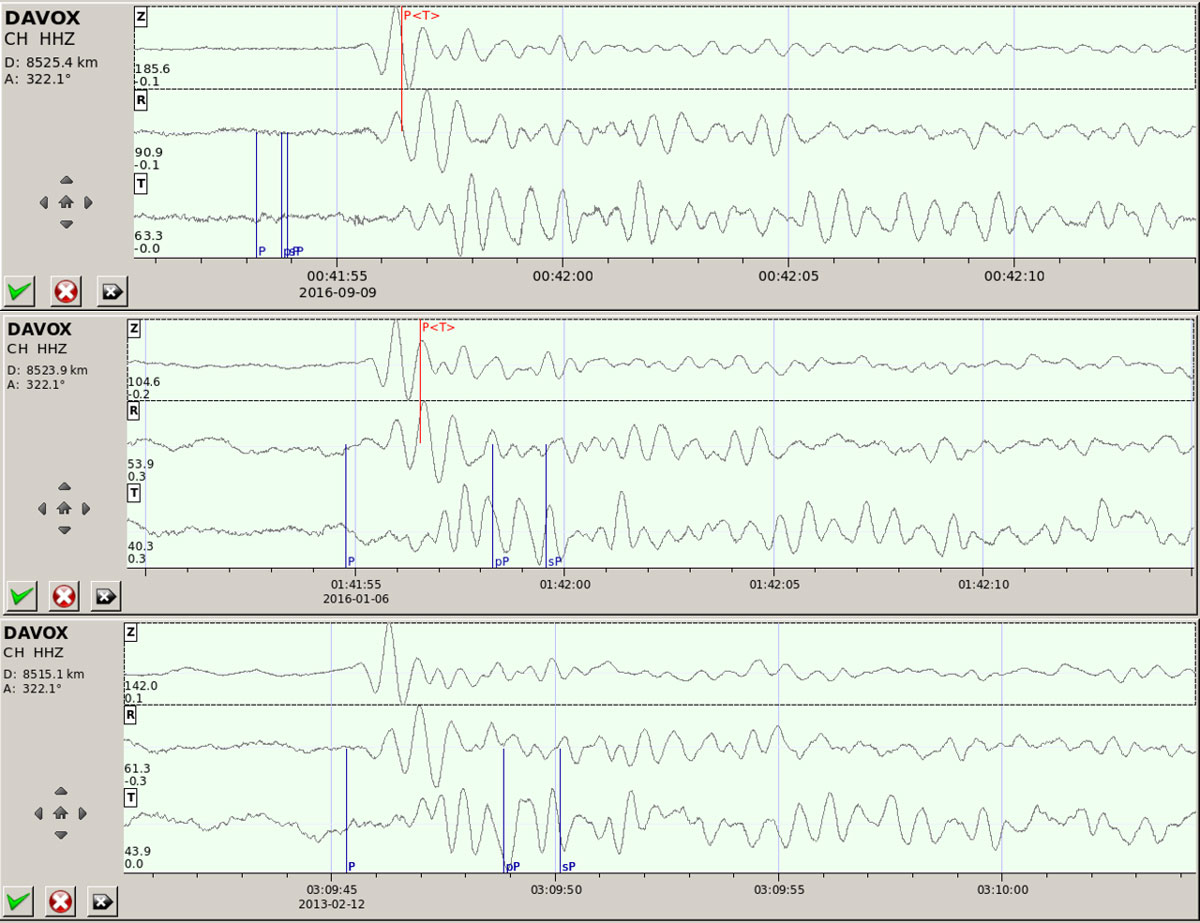2016-09-09
Latest seismic signals from North Korea recorded in Switzerland
Seismic waves most likely generated by a North Korean nuclear test on 9 September 2016 (00:30 UTC, 02:30 Swiss local time) reached the seismic monitoring stations in Switzerland approximately 12 minutes after the event occurred. Seismic waveforms are critical tools for discriminating between explosions and earthquakes. For an explosion, the amplitude of the first arriving P-wave is relatively stronger than the later arriving S-Wave, when compared to a typical earthquake.
Read more...The power of the explosion corresponds to an earthquake with magnitude of 5.3. The energy released from this explosion is about three times stronger than that from the largest previous tests on 6 January 2016 and 12 February 2013, which both reached a magnitude of about 5. Previous tests in 2006 and 2009 reached magnitude 4.1 and 4.5 respectively. According to reports from the Comprehensive Nuclear-Test-Ban Treaty Organization (CTBTO) in Vienna, the explosion of 9 September 2016 is in the direct vicinity of the previous North Korean nuclear tests in 2006, 2009, 2013 and January 2016.
The CTBTO operates a global observation network to monitor adherence to the Comprehensive Nuclear-Test-Ban Treaty. Around 90% of the 337 planned measuring stations, 170 of which include seismic sensors, are currently in operation. The SED operate the station DAVOX, near Davos in the canton of Graubünden, Switzerland, that is also part of this monitoring network. The graph depicts the nuclear-test signals recorded by the DAVOX station of the new event alongside the events of January 2016 and February 2013.
Further information from the CTBTO
General information about verification of nuclear test explosions from the SED
